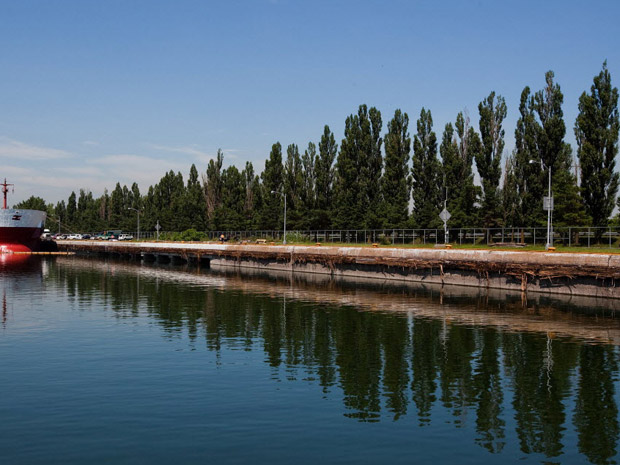The local band council in Kahnawake made good on its word and banned the transport of nuclear-waste materials through the St. Lawrence Seaway section that runs through the Mohawk community.
The resolution, although not binding, signals the band council’s opposition to an Ontario nuclear power plant’s plan to ship 16 radioactive steam generators through the Great Lakes and the St. Lawrence Seaway to a recycling facility in Sweden.
If approved by the Canadian Nuclear Safety Commission, the shipment from southwestern Ontario’s Bruce Power plant would be a first. The shipment has raised concerns from environmentalists, aboriginal groups and officials in more than 100 municipalities throughout Ontario and Quebec.
"We just don’t want it coming through," said Joe Delaronde, a spokesperson for the band council. "The (Seaway) system hasn’t had any catastrophic failings, but accidents have happened."
In Kahnawake, the Seaway’s navigational channel is lined with private homes and community services, including a popular family restaurant, a seniors’ centre and the Moose Lodge.
When the vessels come through, they are so close you can almost touch them, Delaronde said, noting that’s worrisome given recent history.
In addition to this summer’s oil spill from a Canada Steamship Lines vessel that ran aground in the Ste. Catherine lock, Delaronde said, there have been other incidents within the Mohawk territory.
In October, 2002, there was a head-on collision between the Canadian Prospector and a Dutch heavy lift ship called the Stellanova behind Kahnawake’s Survival School. In July 2005, the bulk carrier Orla and the Tanker Jo Spirit collided in the South Shore canal. And in the mid-1990s, he said, a Canada Steamship Lines laker ran aground in the channel, allowing locals to come up and "tap the hull."
With that history, he said, people in the community are worried about a nuclear-waste cargo with a half-life of 24,000 years.
Bruce officials have maintained the cargo would pose no safety risks.
Gordon Edwards, president of the Canadian Coalition on Nuclear Responsibility praised the Mohawk community’s resolution. He said it is one of 30 that have been put forward by Quebec municipalities in the last month.
"We don’t believe that nuclear waste should be allowed to be shipped on the Great Lakes or the St. Lawrence," Edwardsaid. If approved, he said, it would set a dangerous precedent.
Andrew Bogora, a spokesperson for the St. Lawrence Seaway Management Corporation, said on average between eight and 12 vessels pass through the channel daily. It is wide enough to allow two ships with a maximum width of 78 feet (23.8 metres, the standard width of a Great Lakes freighter) to pass and clear one another.




Comments